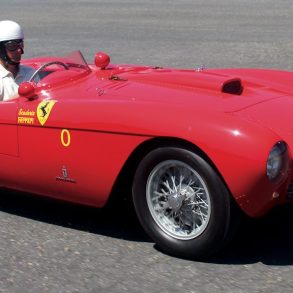I was disappointed. The Aston Martin I was supposed to drive was in the shop. But, Alberto Gutierrez had another Aston waiting for me, and my disappointment quickly turned into joy. Sitting next to the Arnolt Bristol I was to profile (see Wacky? Hardly!—1954 Arnolt-Bristol Bolide) was an absolutely gorgeous Caribbean Pearl Blue DB 2/4 MKIII. Gutierrez said, “I’m an Aston guy, I’ve had a lot of them, and this is one of my favorites. I want you to drive it and see what you think.” Well, I’ve always lusted after an Aston Martin. I drove a DB4 years ago, and have always thought of it as my ultimate automobile, until I saw this DB2/4 MKIII. It was a design evolution from the previous DB2/4 models with a grille treatment that influenced that of the DB4. A transition model? The MKIII seems to have been designed to be the bridge between the older Aston Martin style and what the company believed would be their future.
The company came to be the same way as a few other British sports car manufactures– with an available car modified for competition. In the case of Aston Martin, it was a 10-hp, four-cylinder Singer that Robert Bamford and Lionel Martin modified for trials. Its first event was a hillclimb, at Aston Clinton, on May 24, 1914. It took first in its class, with “The Autocar” writing that it was “remarkable . . . [for its] smooth running and easy climbing.” That win fixed the name of the new marque – it would be Aston Martin. Martin and Bamford’s first Aston Martin prototype used a Coventry-Simplex, 1388-cc, four-cylinder engine in an Isotta Fraschini chassis. Progress on this prototype was delayed as the world engaged in what was called “The War to End All Wars.”
Become a Member & Get Ad-Free Access To This Article (& About 6,000+ More)
Access to the full article is limited to paid subscribers only. Our membership removes most ads, lets you enjoy unlimited access to all our premium content, and offers you awesome discounts on partner products. Enjoy our premium content.
Become a member today!
Already a Member?










